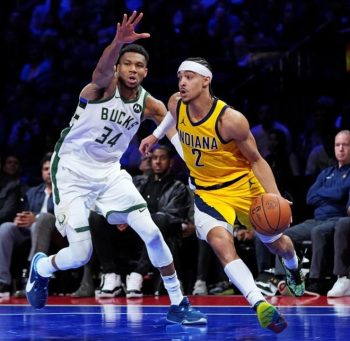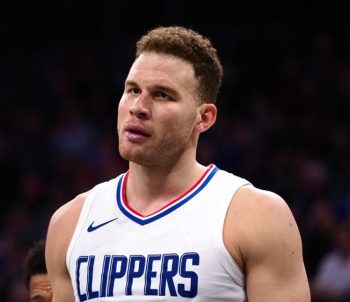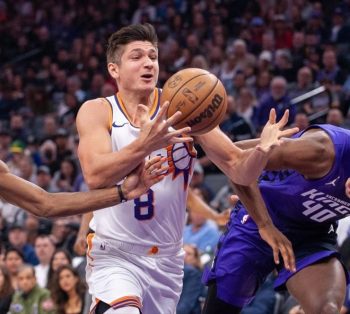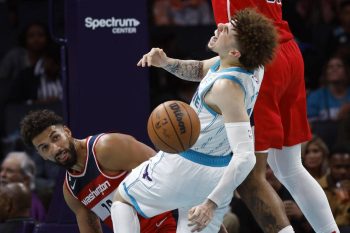NBA
What’s the Next Chapter for Lance Stephenson?

Lance Stephenson may only be 23 years old, but his name is one that has been floating around basketball circles for almost a decade. Nicknamed ‘Born Ready’ back in 2006, Stephenson made a name for himself early on competing in summer league games at New York City’s famed Rucker Park, oftentimes against players much older than him. Even at just 15 or 16 years old, Stephenson had a certain bravado about him, a fearless attitude and willingness to take on any and all challengers.
He played his high school ball at Brooklyn’s Abraham Lincoln High School. Stephenson isn’t the first NBA talent to come out of Lincoln; the school has produced the likes of Stephon Marbury and Sebastian Telfair along with a number of collegiate players. However even with Lincoln’s rich basketball history, Stephenson was able to stand out. He led the school to four straight PSAL titles, a first for Lincoln. During his sophomore and junior seasons, he was named New York City’s player of the year by the New York Daily News. As a junior, he was named to USA Today’s All-USA boys basketball team, the only junior to make that list. As a senior, he became Lincoln’s all-time leading scorer, passing Telfair on his way to another PSAL title. He landed a spot in the McDonald’s All-American game that April, another accolade to add to his collection during his historic high school career.
The next chapter in his basketball journey would take him to the University of Cincinnati, hundreds of miles from the New York City streets where he became a star. The expectations were extraordinarily high upon Stephenson’s arrival at UC. His hype was boiling over after tearing through the high school ranks and becoming one the greatest players in New York City history at that level.
Stephenson was able to hold his own in a talent-laden, physical Big East and was named Big East Rookie of the Year. He averaged just over 12 points per game, which led the team. Despite being named Big East Rookie of the Year, Stephenson had his struggles. The size and strength advantage he possessed at the high school level was no more, and many times Stephenson would try to bully his way into the paint only to turn the ball over or settle for a bad shot. He played selfishly and oftentimes looked as if he thought he was back at Rucker Park. His jump shot was inconsistent and he was particularly bad from three, shooting just 21.9 percent from downtown. Following his freshman season at Cincinnati, Stephenson chose to forgo his remaining eligibility and declare for the NBA draft.
After his much ballyhooed high school career, Stephenson seemed to be a lock for the first round and possibly even a lottery selection. However, in his one year at Cincinnati some of his weaknesses were exposed. When matched up against physical equals, Stephenson wasn’t nearly as effective and his ability to impose his will noticeably diminished. NBA scouts took notice of this, and Stephenson had other red flags as well. His character and maturity concerned a number of NBA decision-makers, since he had been involved in a number ugly off-court incidents. Executives also wondered if Stephenson would be able to fit into their system and questioned how he would perform in a role where he wasn’t the focal point of the offense. He was projected as a late first to early second round pick. Those projections would prove accurate, as Stephenson fell to the Indiana Pacers and the 40th pick in the 2010 NBA Draft.
The draft in general is an inexact science and that goes tenfold for second round picks. For the first time in his career, Stephenson would enter into a situation as an underdog. He wasn’t the star, he was the player who was fighting to make the team.
In his first two seasons with the Pacers, Stephenson was for the most part glued to the bench. He played in just 54 games combined and in those games averaged less than 11 minutes per game. His most memorable moment during those first two years wasn’t a great play or clutch shot, but of him directing the “choke” sign at LeBron James in a 2012 playoff game after LeBron missed a key free-throw. The Pacers would go on to lose that series and Stephenson would be heavily criticized, again bringing into question his maturity.
Shortly after, things would be far different for Stephenson. After two years of little production, Stephenson thrust himself into the starting line-up and became a key contributor for the Pacers, who seemed poised to challenge Miami for Eastern Conference supremacy. In his third season, he started 72 games and showed off a well-rounded game. Stephenson averaged 8.8 points, 2.9 assists and 3.3 rebounds that year. He played significant minutes in the playoffs, but again the Pacers fell short and were bounced by the HEAT.
This season, Stephenson continued to grow as a player. He averaged career-highs in points (13.8), rebounds (7.2) and assists (4.6), as well as increasing his shooting percentages across the board. It was apparent that Indiana had found a gem in the second round as Stephenson developed into an essential piece on a Pacers team that would finish the regular season with the best record in the East.
However, even after their extraordinary regular season, the Pacers entered the playoffs out of sync. The team barely escaped a first round upset at the hands on the Atlanta Hawks, needing seven games to advance. In the second round, they ran into a Washington Wizards team that looked as dangerous as any in the East outside of the HEAT. The team got off to a slow start in that series, but was able to right the ship and knock of the Wizards in six games. Even though the team ended the regular season on a bad note and struggled through the first two rounds of the playoffs, the Pacers were exactly where they wanted to be at the start of the season – facing Miami in the Eastern Conference Finals with homecourt advantage.
Even with homecourt advantage, the Pacers entered the series as serious underdogs. There was still apprehension surrounding the team’s chemistry. Stephenson was a little inconsistent, but over the series his numbers were more than respectable, averaging 14 points, 5.8 rebounds and five assists.
Unfortunately, similar to the 2012 playoffs, it was his behavior on the court that garnered the most attention. He was tasked with matching up against the James for the majority of the series and looked to be on a personal mission to get into his head. Every chance he got Stephenson was poking and prodding at LeBron, culminating in what can only be described as a J.R. Smith-type move when he was caught blowing into James’ ear. James’ reaction was priceless, shaking his head in disbelief. Larry Bird voiced his displeasure to Stephenson, telling his guard, “Don’t do it again.” The Pacers fought hard, but once again didn’t have enough to get by the HEAT.
With Stephenson’s contract expiring this offseason, he and the Pacers are at a bit of a crossroads. Stephenson may have the opportunity to cash in while playing for a lesser-caliber team and the Pacers must decide if, despite his antics, he is worth bringing back. Bird spoke briefly about Stephenson during a season-ending press conference on Monday.
“I think his ceiling is what he wants it to be,” Bird said of Stephenson. “I always want him back. You don’t let talent like that walk away if you can help it.”
That should be encouraging news for Stephenson, but at the same time Bird stressed that the price must be right.
“We’ve talked about it briefly, but haven’t sat down with owner [Herb Simon] yet,” Bird said. “There’s going to be a price and we’re not going to go over that.”
Stephenson has come a long way since his days at Lincoln High School and summer showcases at Rucker Park, and he has grown into a very solid NBA guard. It is expected he will command somewhere between $8 and $12 million per season on his new contract. He will undoubtedly be ready to capitalize on the hard work that has put him in this position.
With George Hill ($8 million per year), Roy Hibbert ($14-$15 million per year), David West ($12 million per year) and Paul George ($14-$16 million per year) all under contract through at least next season, Bird may have to get creative if he wants to retain Stephenson. Would Stephenson be willing to take a “hometown discount” or would he rather take more money to play elsewhere? A number of teams have already been mentioned as potential suitors for Stephenson, including the Chicago Bulls and Charlotte Hornets.
Stephenson’s free agency will certainly be one of the more fascinating storylines this offseason and it will be interesting to see what the next chapter of Stephenson’s basketball journey brings.











